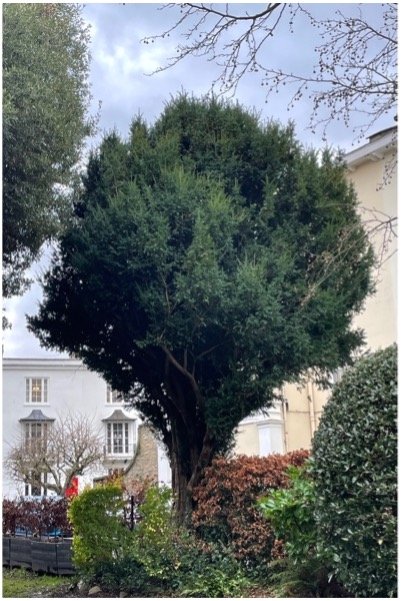English Yew
The Yew Tree is adjacent to house no. 42
Description
The English Yew (taxus baccata) is an evergreen, conifer, conical-shaped, small tree, that reaches 30 to 60 feet in height. It has dense spreading branches with dark green linear needle-like leaves. Yew seeds grow at the tip of a dwarf shoot, enclosed in a red, fleshy, cup-like structure called an aril.
Age
The Yew tree is probably the oldest tree in the garden, dating back to c.1870. However, the Yew is incredibly long-lived and is not considered ancient until it reaches 900 years old. Some are thought to have lived for thousands of years.
Wood
Yew wood is heavy, very hard and firm, tough and elastic. Traditionally, the wood was used to make long bows, turnery and tool handles. The English longbow, a weapon firing 10 arrows a minute was used to great effect against the French during the Hundred Years War, particularly at the Battle of Agincourt.
Health
Anti-cancer compounds are harvested from the foliage of the Yew tree and used in modern medicine. However, all parts of the tree are poisonous! Eating just a few leaves can make a small child severely ill and there have been some deaths linked to Yew poisoning.
Wildlife
The fruit is eaten by birds, such as the blackbird, mistle thrush, song thrush and fieldfare and small mammals, including squirrels and dormice. The leaves are eaten by caterpillars of the satin beauty moth.
Myths and Legends
Probably due to the tree's qualities of longevity and regeneration, the Yew has been associated with death and the journey of the soul from this life to the next for thousands of years. Yew came to symbolise death and resurrection for the ancient Celts which continued into the Christian era; yew branches were carried on Palm Sunday and at funerals for many centuries. Today, ancient Yew trees are often associated with churchyards.
home to the Song Thrush
the berries are poisonous!


